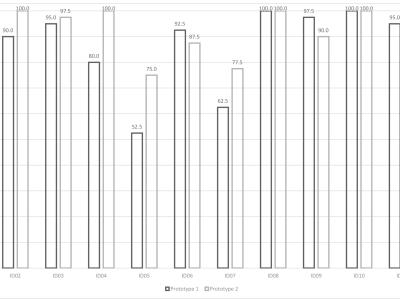Ethool usability evaluation

- Citation Author(s):
- Submitted by:
- Ainara Garzo
- Last updated:
- DOI:
- 10.21227/m8yv-0133
- Data Format:
 210 views
210 views
- Categories:
- Keywords:
Abstract
The data include:
- Demographic data of the participants including: gender, group of participation and number of years in the company.
- Results of the use of Ethool including: expended time and subjective evaluation of if using a Likert of 5 points. Two different files are available corresponding to each iteration (prototype 1 and prototype 2).
- Results of the SUS questionnaire for both iterations (prototype 1 and prototype 2).
Instructions:
The evaluation included two iterations. Usability was measured between iterations, and improvements between iterations were implemented in the prototypes. The files include the following information:
- Demographic data of the participants including gender, group of participation and number of years in the company.
- Results of the use of the Ethool tool including: expended time and subjective evaluation of it using a Likert of 5 points. Two different files are available corresponding to each iteration (prototype 1 and prototype 2).
- Results of the SUS questionnaire [1] for both iterations (prototype 1 and prototype 2). A Python script has been developed for the SUS questionnaire data process [2], according to the literature [3].
[1] J. Sauro, “Measuring Usability with the System Usability Scale (SUS),” MeasuringU. 2011, Accessed: May 31, 2020. [Online]. Available: https://measuringu.com/sus/.
[2] A. Garzo, “agarzo/sus_process python code,” GitHub. 2020, Accessed: Jul. 29, 2020. [Online]. Available: https://github.com/agarzo/sus_process.
[3] A. Bangor, P. Kortum, and J. Miller, “Determining what individual SUS scores mean: adding an adjective rating scale,” J. Usability Stud., vol. 4, no. 3, pp. 114–123, 2009.







